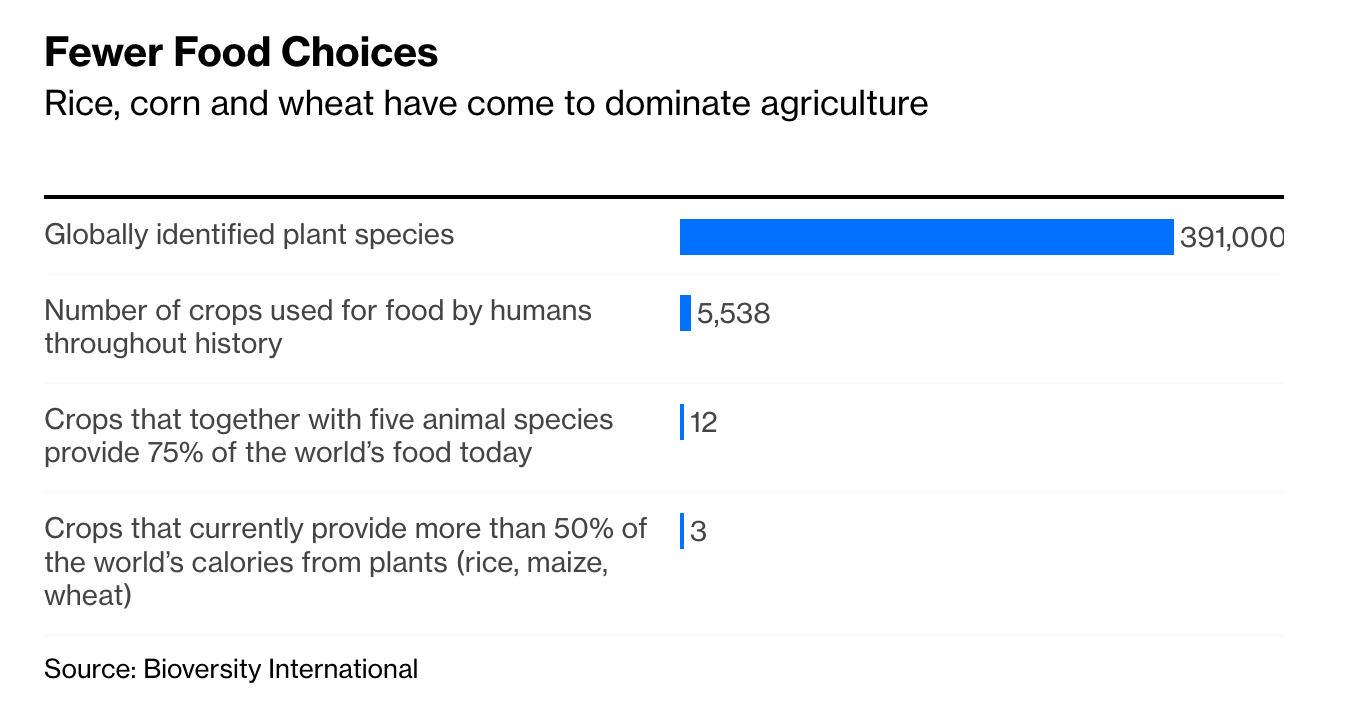This opinion piece was originally posted on the Bloomberg Opinion.
The Ukraine war highlights how reliance on a few big staple crops threatens food security and global nutrition.
Stunned by Russia’s assault on Ukraine, Europe is scrambling to diversify its energy supply — from piped Russian gas to liquified natural gas, more renewable power and nuclear power. In the same way, and for much the same reason, the ongoing war should push countries to shift and diversify their food supply — to make it more secure and, at the same time, improve nutrition worldwide.
Russia and Ukraine together supply 30% of the world’s wheat. This is why the war has caused wheat prices to skyrocket, along with the prices of many other food commodities. From February to March, the U.N. Food and Agriculture Association’s Food Price Index leapt 12.6% to an all-time high. This threatens people around the world with unprecedented food insecurity.
It also highlights the need to reform the global food system, which now leaves too many people dependent for nourishment on just a handful of mass-produced grains, including wheat, rice and corn.
To deal with the immediate shortages, farmers in the U.S., India, Canada and elsewhere will have to plant more wheat. And people worldwide will have to replace wheat with rice and other available grains. In the long term, though, this crisis provides an opportunity to change the face of agriculture and reduce the world’s dependency on wheat and other big staple crops.
Accomplishing this shift will be politically challenging. Many countries have entrenched agriculture subsidies that support big commodities including corn, rice, wheat, oils, sugar and soy, and ensure that they are grown at massive scale using uniform farm production practices. In the countries that grow two-thirds of the world’s crops, governments provide $540 billion a year in agricultural support. The U.S. alone spends $16 billion annually on farm subsidies, 80% of which goes to the largest 10% of farms.
This paradigm has many flaws. After all, there will always be risks in relying too heavily on one grain or just a few. It makes it difficult to address disruptions in supply caused by conflicts, protracted crises and fragile states — as the conflict in Ukraine makes clear. And in addition to geopolitical problems, there is the age-old but now growing threat of bad weather.
Heat waves, droughts, floods and cold spells can devastate wheat, corn, soy and rice crops. Because of climate change, extreme weather has already reduced harvests enough to push food prices up to their highest levels in 40 years. Climate change also increases the risk that such extreme weather events might occur at various locations in the same season. This phenomenon of “multiple breadbasket failures” stands to compromise billions of people’s access to food.
Subsidies for the big crops also neglect the need to promote healthy diets. Take wheat, for example. Whole unrefined wheat is a major source of starch and energy, as well as protein, vitamins (notably B vitamins), dietary fiber and phytochemicals. But demand for wheat has been rising globally because of its unique gluten properties, which make it also an ideal component of bread, noodles, pasta, cookies, crackers and many other baked foods and snacks. These highly processed foods, which now constitute a significant share of the world’s diet, are depleted of healthy nutrients and contribute to poor health.
Over the past 50 years, farm subsidies, supported by complementary research and development efforts in agriculture-dependent countries, have made rice, corn and wheat the world’s most dominant crops, accounting for two-thirds of global food-energy intake. Alternative staples such as sorghum, millet, rye, cassavas, sweet potatoes and yams haven’t disappeared — at least not yet — but they have become steadily less important.
To encourage a more diverse and resilient food supply, countries should begin reorienting agriculture subsidies toward fruits, vegetables, nuts and legumes and other nutritious foods. A recent study suggests that if half of all agriculture subsidies worldwide were repurposed to support the growing of foods that benefit human health as well as the environment, it could increase the cultivation of fruits and vegetables by as much as 20% and reduce greenhouse-gas emissions from agriculture by 2%.
Shifting agriculture subsidies is no easy lift. Many farmers depend on them to support their livelihoods, and many would consider it incredibly risky to make major changes in what they grow. But with climate change increasing and geopolitics unstable, change is becoming more and more necessary. And if people are to avoid chronic health problems such as diabetes and heart disease, they need assistance from the food system to adopt more nutritious diets. The global disruption caused by the war in Ukraine should prompt governments to reconsider their efforts to influence the crops farmers grow and move toward encouraging a more diverse food supply.



